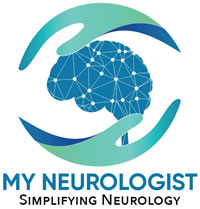This is a form of blindness caused by a problem in the visual pathway within the brain. Loss of vision in this condition is not from a defect of one or both eyes, or the optic nerve(s). With normal eyes and the optic nerves, patient may be able to see but has difficulty perceiving the image.
Is hemianopia a disease?
Hemianopia is a sign or finding on examination, and by itself does not suggest a particular disease. Multiple conditions can cause hemianopia.
What are different types of hemianopia?
Hemianopia can be complete or partial. In complete hemianopia, patient may have problem with half of vision from each eye. It is called right-hemianopia if the problem is with the right-sided, and left-hemianopia, if it is with the left-sided vision. Rarely, it can also be the outer-half vision of both eyes. The type and extent of hemianopia depends upon the exact location of the problem in the brain.
What are different causes of hemianopia?
Usual causes of hemianopia are migraine, stroke and brain tumor, on the opposite side. Any other type of injury affecting the parietal and/or occipital lobe can also be the cause. Cause of hemianopia affecting outer-half vision of both eyes can be a pituitary area tumor. Hemianopia caused by migraine usually lasts for a few minutes, to an hour or two.
How is hemianopia diagnosed?
It can be diagnosed by bedside examination, especially if it is significant or complete. In subtle cases, a formal visual-field test, usually done at ophthalmology office, can help.
How is hemianopia treated?
There is no specific treatment for hemianopia, other than treatment of the cause. Research is going on to find ways to help patients with this disabling condition.
Can a patient with hemianopia drive a vehicle?
Patient with partial or complete hemianopia may ignore vision on one side, especially in fast-paced setting, such as driving, and may ignore one side of the road and can easily get into an accident. Driving is not recommended for a patient with hemianopia.
What to do if one has hemianopia?
Patients usually do not have the full understanding of the nature of blindness with hemianopia. Most patients believe that there is something wrong with their one eye, instead of field of vision of both eyes. In case of sudden loss of vision, call 911 and try to come to emergency room as soon as possible. This is because, if it is caused by a stroke, it can only be treated within first few hours. Migraine is a common cause of blurred vision, in which case, it builds up slowly, in a matter of minutes instead of seconds, and usually affects one eye.
Where can I get more information about hemianopia?
American Ophthalmology Society


Leave a Reply
Your email is safe with us.
You must be logged in to post a comment.